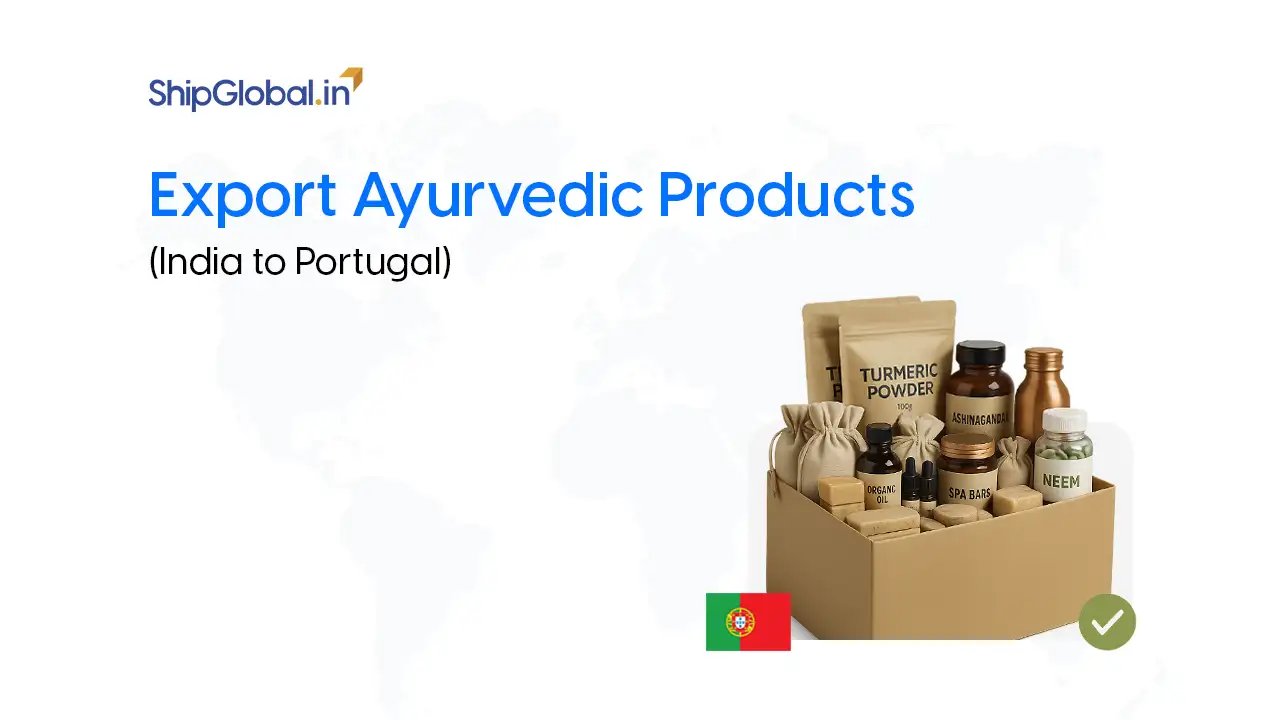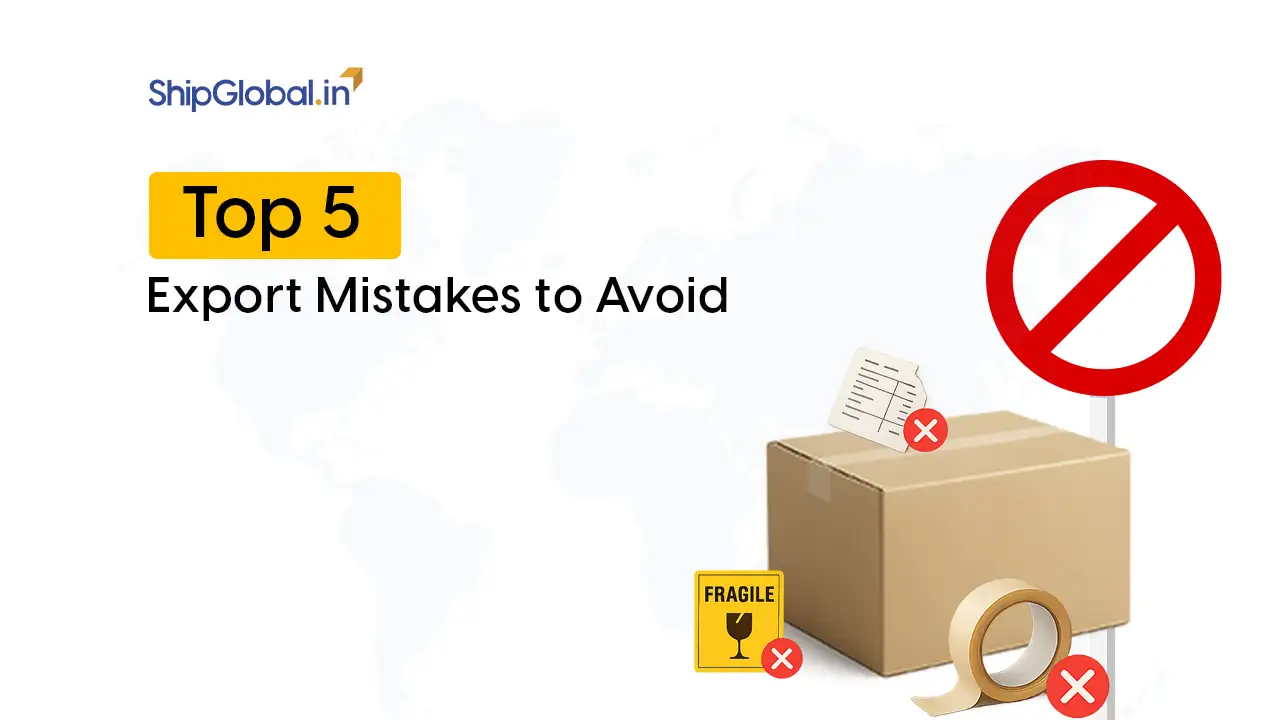When you’re sending goods across borders, there’s a lot that can get lost in translation—who’s paying for what, when does risk transfer, and who handles the paperwork? That’s where Incoterms come in.
Think of Incoterms like the rules of the shipping game. They define who does what, when, and where, making sure buyers and sellers are on the same page, no matter which part of the world they’re in.
So, if you’re new to exports, or even if you’ve been shipping for a while but still get confused between FOB and DDP, this guide is for you.
What are Incoterms
Incoterms stand for International Commercial Terms. They’re a set of standardized trade terms/rules published by the International Chamber of Commerce (ICC). First introduced in 1936, the latest version is Incoterms 2020.
They help answer big questions like:
- Who pays for shipping?
- Who takes care of insurance?
- When does the risk shift from seller to buyer?
- Who handles customs and taxes?
Instead of negotiating these points from scratch for every shipment, exporters and importers just refer to the relevant Incoterm, like FOB, CIF, or DDP.
Key Points
- Incoterms (International Commercial Terms): They were originally developed by the ICC in 1923 as trade terms, and later officially introduced as Incoterms in 1936.
- They are a standardized set of guidelines used by parties across different countries and legal systems to structure the logistical aspects of buying and selling goods.
- Their main purpose is to define the division of risks and costs between the seller and the buyer by establishing a specific time and place for delivery in a sales transaction involving physical goods.
- Incoterms have been revised multiple times, including three early revisions (1953, 1967, 1974) and then updates in 1980, 1990, 2000, 2010, and most recently in 2020.
- The latest revision has been in effect since January 2020.
Each Incoterms® rule follows a consistent format: a three-letter abbreviation followed by a location. This location is significant because it determines the point at which transportation costs shift from the seller to the buyer. Let’s take CIF (Cost Insurance and Freight) as an example:
Incoterm: CIF (Cost Insurance and Freight)
Location: “CIF Port of Hamburg”
Explanation: Under CIF, the seller covers the cost of shipping the goods to the named destination port (Hamburg) and also provides insurance during transit. The buyer takes over responsibility for the goods once they are loaded onto the ship at the port of origin.
However, depending on the specific Incoterm, this same location may not necessarily mark the transfer of risk, nor clarify who should arrange transport insurance or where it should be done.
Why Do Incoterms Matter
Let’s say you’re a seller in Mumbai, and your buyer is in Berlin. If the goods are damaged during transit, who’s responsible? If there’s a delay at customs, who pays the penalty?
Incoterms avoid misunderstandings like these. These rules are crucial as they specify who is responsible for various tasks, expenses, and risks throughout the transaction. They make international transactions smoother by clearly dividing responsibilities between the seller and the buyer.
Key Changes in Incoterms 2025
The most recent version, which incorporates updates based on the latest commercial practices, came into effect on January 1, 2020. It’s important to be familiar with these updates to ensure your business stays in line with current international trade standards. The latest version helps businesses adapt to changes like the growth of e-commerce, supply chain disruptions, and clarifies previous uncertainties.
Current Status of Incoterms in 2025
As of March 2025, the latest applicable version of Incoterms is still the 2020 edition. The International Chamber of Commerce (ICC) generally updates Incoterms once every ten years, with the last revision taking effect on January 1, 2020. As such, no new version or amendments have been released in 2025.
Incoterms® 2020
The latest Incoterms® 2020 includes a total of 11 rules. Out of these, four are specifically tailored for ocean freight, meaning they apply only to sea and territorial water transport. The other seven are suitable for cargo or goods moved by any mode of transport, including water. These rules serve as a clear framework for assigning responsibilities related to costs, risk, and key logistics activities during the delivery process.
The seven Incoterms® 2020 applicable to all transport modes are:
| Incoterm | Description |
|---|---|
| EXW | Ex Works (insert place of delivery) |
| FCA | Free Carrier (insert named place of delivery) |
| CPT | Carriage Paid to (insert place of destination) |
| CIP | Carriage and Insurance Paid to (insert place of destination) |
| DAP | Delivered at Place (insert named place of destination) |
| DPU | Delivered at Place Unloaded (insert place of destination) |
| DDP | Delivered Duty Paid (insert place of destination) |
Note: DPU replaces the former DAT term and requires the seller to unload the goods at the named place of destination.
The four Incoterms® 2020 rules specific to Sea and Inland Waterway Transport are:
| Incoterm | Description |
|---|---|
| FAS | Free Alongside Ship (insert name of port of loading) |
| FOB | Free on Board (insert named port of loading) |
| CFR | Cost and Freight (insert named port of destination) |
| CIF | Cost Insurance and Freight (insert named port of destination) |
Decoding Incoterms® 2020 Rules
Here’s a simplified breakdown of all 11 Incoterms® 2020 rules to help you better understand how they apply to your international trade contracts.
EXW: Ex Works
- Under Ex Works, the seller makes the goods available to the buyer at the seller’s premises or another specified location (such as a factory or warehouse).
- The seller is not responsible for loading the goods onto the collecting vehicle or clearing them for export, if required.
FCA: Free Carrier
- The seller hands over the goods to the carrier or another party nominated by the buyer, either at the seller’s own premises or another agreed place.
- It is important for both parties to clearly specify the exact point within the chosen location, as the risk transfers to the buyer at that moment.
- 2020 Update: This rule now allows for the issuance of a Bill of Lading with an onboard notation.
FAS: Free Alongside Ship
- The seller delivers the goods by placing them alongside the vessel designated by the buyer at the named port of shipment (e.g., on a quay or barge).
- Once the goods are placed alongside the ship, risk of loss or damage transfers to the buyer, who takes over all costs from that point forward.
FOB: Free on Board
- The seller is responsible for delivering the goods on board the vessel named by the buyer at the specified port of shipment or ensuring the goods are already loaded.
- Responsibility and cost shift to the buyer once the goods are on board the vessel. The buyer pays for international freight, insurance, and any additional costs thereafter.
- The seller covers the cost of delivering the goods to the port, loading them onto the ship, and handling export duties, taxes, and customs clearance.
- The buyer is responsible for the main freight charges, unloading at the destination, and handling import duties, taxes, and customs at the receiving country.
CFR: Cost and Freight
- The seller delivers the goods on board the vessel or ensures they are already delivered that way.
- The risk transfers to the buyer once the goods are on the ship.
- The seller must arrange and pay for the freight to carry the goods to the named destination port.
CIF: Cost Insurance and Freight
- The seller delivers the goods on board or arranges for their delivery in that manner. Risk shifts to the buyer once the goods are on the ship.
- The seller pays for both freight and insurance to transport the goods to the destination port.
- The insurance cover arranged by the seller is only for minimum protection. If the buyer wants broader coverage, they must either agree on it in advance with the seller or arrange it themselves.
CPT: Carriage Paid to
- The seller delivers the goods to the carrier or another party they designate, at an agreed location (if specified).
- The seller must cover the cost of transporting the goods to the named destination.
CIP: Carriage and Insurance Paid to
- This rule is similar to CPT, but the seller must also arrange insurance against the buyer’s risk of damage or loss during transit.
- As with CIF, the insurance cover under CIP is limited to the minimum. Buyers seeking extra protection must either agree with the seller beforehand or arrange their own additional insurance.
DAP: Delivered at Place
- Delivery is complete when the goods are ready for unloading at the named destination and made available to the buyer.
- The seller takes on all the risks and responsibilities for getting the goods to that point.
DPU: Delivered at Place Unloaded (replaces DAT)
- DPU replaces the former DAT (Delivered At Terminal) rule.
- The seller delivers the goods after they are unloaded at the named destination and made available to the buyer.
- All risks and costs, including unloading, are the seller’s responsibility until that point.
- The seller completes delivery when the goods, cleared for import, are made available to the buyer on the arriving transport at the named place, ready for unloading.
- The seller handles all costs and risks, including export and import formalities, duties, taxes, and any other related charges.
- Under DDP, the seller is fully responsible for shipping, import clearance, and all associated expenses involved in delivering the goods to the final destination.
Key Changes in Incoterms® 2020
Incoterms 2020 introduced several important updates that impact how international trade is conducted. Here are the key changes:
- The term Delivered at Terminal (DAT) was replaced with Delivered at Place Unloaded (DPU), expanding the delivery options to include any location, not just a terminal such as an airport or port.
- Under FCA (Free Carrier), sellers can now request a bill of lading with an onboard notation from the carrier after loading—an important feature for exporters dealing with letters of credit.
- The CIP (Carriage and Insurance Paid to) and CIF (Cost Insurance and Freight) rules were revised to reflect different minimum insurance coverage levels, aligning more closely with industry practices and offering more suitable protection.
Incoterms 2020 vs Incoterms 2010: A Quick Comparison Table
| Incoterms 2010 | Incoterms 2020 |
|---|---|
| The seller was not entitled to receive an on-board bill of lading, which was usually issued to the buyer after the goods were handed over to the carrier, without an on-board notation. | The seller can now request the carrier to issue an on-board bill of lading once the goods are loaded, which is especially helpful in letter of credit transactions. |
| DAT (Delivery at Terminal) required the seller to deliver and unload the goods specifically at a terminal. | DAT has been replaced by DPU (Delivered at Place Unloaded), expanding the delivery location to any place, not limited to terminals. |
| CIP (Carriage and Insurance Paid to) required the seller to provide insurance coverage at least meeting Institute Cargo “C” Clauses standards. | CIP now mandates that the seller provide insurance coverage under Institute Cargo “A” Clauses, which offers broader protection. |
| The responsibility for arranging carriage was generally determined by the specific Incoterm chosen. | Terms such as FCA, DAP, DPU, and DDP now allow either the seller or buyer to handle the carriage of goods, with the obligation to “contract or arrange at its own cost for the carriage of goods from the named place of delivery.” |
Can I Still Use Incoterms® 2010 After January 1, 2020
Yes, contracts using any version of Incoterms remain valid as long as all parties involved agree to them and the chosen terms are clearly specified in the export documents. While the ICC recommends adopting Incoterms® 2020 starting January 1, 2020, buyers and sellers can still agree to use Incoterms® 2010 or any earlier version. It’s important that the specific version of Incoterms being applied is clearly stated in the contract.
What Incoterms Do Not Cover
As mentioned earlier, Incoterms are typically included in the contract of sale, but they do not:
- cover all the terms and conditions of the sale agreement;
- specify the goods being sold or mention the contract price;
- include details about the method or timing of payment agreed upon between the seller and buyer;
- define when the ownership (or title) of the goods transfers from seller to buyer;
- outline which documents the seller must provide to the buyer to support customs clearance in the buyer’s country;
- deal with liability issues related to non-conforming goods, delivery delays, or procedures for resolving disputes.
Common Mistakes to Avoid with Incoterms
- Misunderstanding Responsibilities: Always review obligations carefully.
- Using Incompatible Terms with Transport Mode: e.g., FOB should be used only for sea freight.
- Failing to Specify a Place: Terms should mention exact delivery location for clarity.
Impact of Incoterms on Freight Costs and Documentation
Influence on Costs
- Incoterms like CIF and DDP increase seller’s cost responsibility.
- EXW transfers most costs to the buyer.
Impact on Documentation
- CIF requires insurance certificates.
- DDP demands thorough documentation for customs compliance.
- Incoterms help streamline bills of lading, airway bills, and certificates of origin.
Conclusion
Incoterms aren’t just some technical jargon—they’re essential tools for doing international business safely and smartly.
Each Incoterm specifies a different level of responsibility for the buyer and seller, clearly identifying each party’s obligations at every stage of the process. Whether you’re a small eCommerce seller or a large-scale exporter, knowing your Incoterms can save you from costly mistakes and confusing conversations.
So, the next time someone throws around “FOB” or “DDP,” you’ll not only know what they mean but you’ll also know when to use them, and why.
FAQs
Incoterms, short for International Commercial Terms, are a set of standardized trade terms/rules published by the International Chamber of Commerce (ICC). These rules define responsibilities of buyers and sellers in international trade regarding shipping, insurance, and customs.
The current version, Incoterms 2020, includes 11 terms.
EXW is simple and shifts most responsibility to the buyer, making it suitable for new exporters.
Yes, but any modifications should be clearly stated in the contract to avoid confusion.
They become binding when included in a contract and agreed upon by both parties.
No, DPU is not a new rule but a renamed and repositioned version of the previous Delivered at Terminal (DAT). The change to Delivered at Place Unloaded (DPU) was made to clarify that the goods can be delivered to or the destination can be any place, and not just a terminal.







